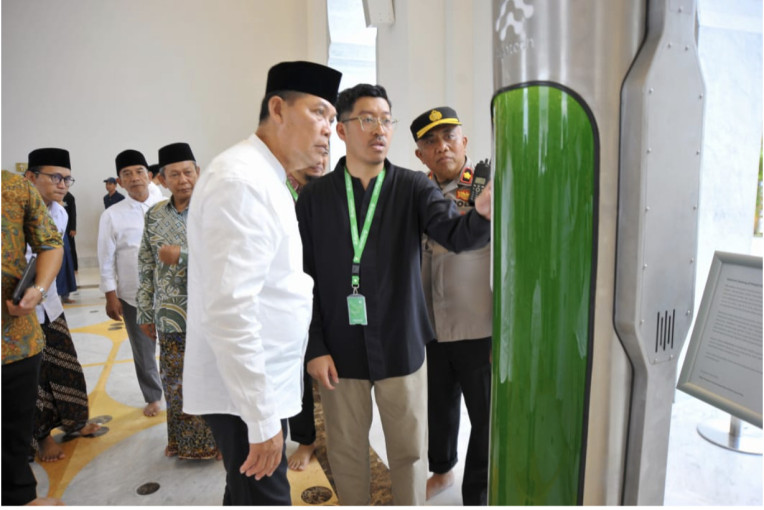
Microalgae have recently been recognized for their ability to absorb carbon dioxide. CO2 is absorbed and processed through metabolism involving large amounts of proteins, fats, and carbohydrates.
Additionally, microalgae can easily survive in polluted areas, extreme temperatures, and even toxic air. This potential makes them an intriguing subject for further research to address global climate change.
Seizing this opportunity, UGM has successfully developed the Microforest 100 technology based on microalgae to contribute to the Net Zero Carbon commitment.
This technology was initiated by Professor Arief Budiman of Chemical Engineering at the UGM Faculty of Engineering (FT UGM) and Dr. Eko Agus Suyono, a lecturer at the UGM Faculty of Biology (Biology UGM).
Both are researchers at the UGM Center for Excellence in Science and Technology for Microalgae Biorefinery, which created this technology with the support of matching funds from the Directorate General of Higher Education through the Kedaireka platform in the 2022 fiscal year.
The two researchers designed the Algaetree prototype, a decarbonization technology to tackle CO2 production in the open air. Thanks to collaboration with the startup PT Algatech Nusantara, the prototype was successfully developed into a product called Microforest 100.
Microforest 100 was installed on Monday (Jun. 17) at the Syeikh Zayed Grand Mosque in Solo. During the launch session, Rangga Wishesa, CEO of Algatech Nusantara, explained how it works.
“The two-meter-high installation functions to absorb carbon in the air using photobioreactor technology,” Wishesa stated in a release sent on Thursday (Jun. 26).
Wishesa also mentioned that PT Algatech Nusantara was pleased to collaborate in developing the UGM researchers’ prototype. The startup helped add several complementary features, such as design development, fabrication, and the addition of cultivation condition sensors to ensure Microforest operates at its best.
According to him, the system within Microforest 100 will absorb a significant amount of carbon dioxide, equivalent to five mature trees about 15 years old. This is based on the capability of microalgae, which can absorb 30-50 times more carbon dioxide than current terrestrial plants.
The initial placement of Microforest 100 at the Syeikh Zayed Grand Mosque is deemed suitable due to the mosque’s high visitor traffic. The device is placed in an open area to absorb CO2 produced by visitors.
Dr. Munajat, Director of the Syeikh Zayed Grand Mosque, stated that mosques can be one of the crowded public facilities that generate significant carbon emissions. The Syeikh Zayed Mosque itself can receive tens of thousands of visitors daily.
“The launch of Microforest 100 also monitors how well the machine can sustain carbon absorption for further development,” he said.
UGM researchers, the Syeikh Zayed Grand Mosque’s Director, PT Algatech’s management representatives, and the Deputy Mayor of Surakarta, Teguh Prakosa, attended Microforest 100’s launch session.
Additionally, representatives from the United Arab Emirates (UAE) were present to observe the first implementation of Microforest 100 in an Indonesian mosque.
If proven effective in absorbing large amounts of carbon, Microforest 100 will be further developed for placement in other places of worship, such as the Grand Mosque in Mecca and the Prophet’s Mosque in Medina.
According to researcher Dr. Suyono, microalgae still have the potential to be developed into other processed products, such as bioenergy fuels. He hopes this potential can be further explored for the benefit of the wider community.
“In this way, carbon emission reduction can occur massively to address climate change,” he concluded.
Author: Tasya
Editor: Gusti Grehenson

